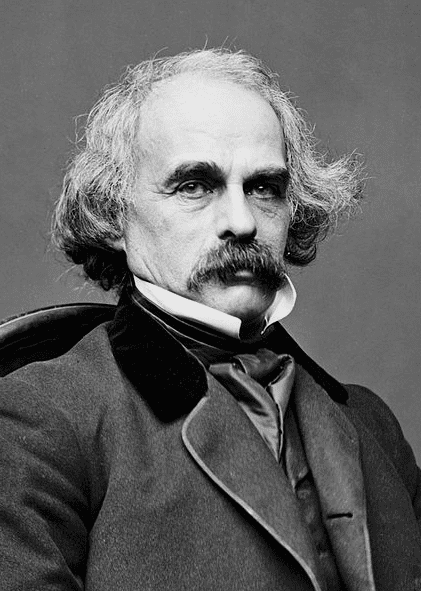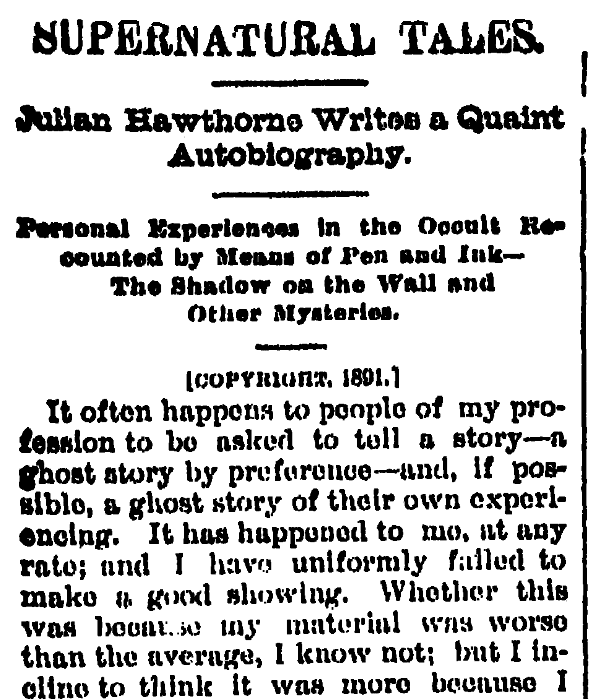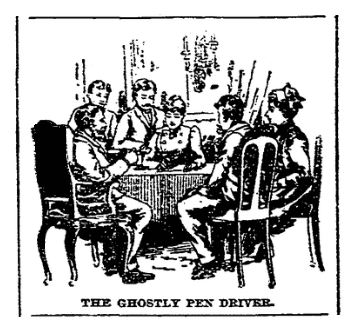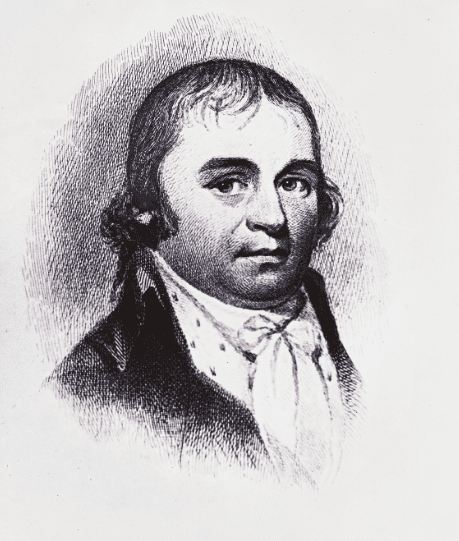Introduction: In this article, Melissa Davenport Berry tells an eerie tale about Nathaniel Hawthorne and a troubled spirit that came to him in a seance. Melissa is a genealogist who has a website, americana-archives.com, and a Facebook group, New England Family Genealogy and History.
When author Nathaniel Hawthorne and his wife Sophia prepared for their European trip in 1857, they needed a governess for their three children Una, Julian, and Rose. Horace Mann recommended Ann Adeline Shepard (1835-1874), a student at his school (Antioch College) in Ohio. The governess “Ada” possessed a skill in the occult known as a “writing medium.” It was a form of divination in which the medium holds a pencil over a piece of paper, then receives spirit communication through writing.

In 1891 Julian Hawthorne’s story “Personal Experiences in the Occult Recounted by Means of Pen and Ink” ran in newspapers across the country.

Ada’s role as “ghostly pen driver” during the seances the Hawthorne family held in Florence in 1858 was described in this article. The story also appeared in the Boston Herald, with this drawing.

Julian was not the only one to record the seances. In Memories of Hawthorne, Rose Hawthorne wrote:
“Miss Shepard and I went to see some table-turning,” and “We tried patiently for two hours with the table, but though it trembled and wavered, nothing came of it until Miss Shepard took up pencil and paper for the spirits to write, if they would. The attempt on Miss Shepard’s part was now, and always afterwards, successful.”
One by one Ada channeled the ancestors of seance attendees. However, a “new, turbulent influence” pushed in on the night of 25 August 1858. Ada’s hand was overtaken and violently seized, and the message was communicated: “I must speak with Mr. Hawthorne. I want his sympathy.”
Nathaniel was humored and replied that she had his sympathy. The spirit conveyed that she was born in Boston, 100 years before, and died there in pain and misery, still a young woman. The source of her pain was caused by a member of the family. The spirit’s name was Mary Rondel.
As Julian Hawthorne wrote in his book Nathaniel Hawthorne and His Wife: A Biography:
“From this time forth, Mary Rondel, violent, headstrong, often ungrammatical, and uniformly eccentric in her spelling, was the chief figure among the communicants from the other world. She would descend upon the circle like a whirlwind, at the most unexpected moments, put all the other spirits unceremoniously to flight, and insist upon regaling her audience with a greater or less number of her hurried, confused, and often obscure utterances.”
The seances were finally abandoned and that was the end of Mary Rondel… so they thought…
After Nathaniel’s death in 1864 Miss Ingersoll of Salem sent Julian a copy of Sir Philip Sidney’s book Arcadia. Written in the margins on a page was the name Mary Rondel, and among the pages of love sonnets was the chirography of Daniel Hathorne: “Pray, mistress, read this,” and “Read this as if myself spake it.”

(Daniel Hathorne was Nathaniel Hawthorne’s grandfather; Nathaniel added the “w” to his surname sometime after graduating college.)
Julian wrote to Ingersoll, and she responded:
“Dear Cousin, A Miss Mary Rondel, of Boston, knew Daniel Hathorne. The story will not interest you; it is not creditable to either party. It ended unfortunately; there had been some talk of a marriage, but their relations were broken off, and I am unable to say what became of the young woman and afterwards Daniel fitted out a privateer.”
How the name “Mary Rondel” appeared during the 1858 seances is a mystery; Ada certainly could not have known that 100 years earlier, a Mary Rondel was involved with Nathaniel’s grandfather Daniel. Years later, Julian looked into this story and wrote in his biography of his parents:
“The following facts were elicited: that, in 1755 or thereabouts, when Daniel was over twenty-one years old, he fell in love with a young woman named Mary Rondel, who lived in Boston. She returned his love; but, somehow or other, the affair ended unhappily, and Mary soon after died. No more than this was known; but this was enough to complete a singular and unaccountable story… The name of Mary Rondel is not a common one; the present writer does not recollect ever to have met with it, except in this instance. But, at all events, these are the facts, and the reader is free to deal with them according to the best of his belief or incredulity.”
Notes:
Daniel Hathorne (1731-1796) was a Revolutionary War hero celebrated for his bravery on the Massachusetts privateer Fair American in a song written by a surgeon on board entitled “Bold Hathorne.”
In 1756 Daniel married Rachel Phelps (1734-1813), daughter of Jonathan and Judith Cox Phelps. Years later, in 1804, Nathaniel was born at their home on 27 Union Street, Salem, Massachusetts. Many critics assert that the governess Ada had been the model for the character of Hilda in Nathaniel’s novel The Marble Faun.
The copy of Arcadia, sold for $35 in 1931, is listed in “The Stephen H. Wakeman Collection of Books of Nineteenth Century American Writers, the Property of Mrs. Alice L. Wakeman” as Lot number 390. Mary Rondel’s name is listed on page 10.
An online collection of newspapers, such as GenealogyBank’s Historical Newspaper Archives, is not only a great way to learn about the lives of your ancestors – the old newspaper articles also help you understand American history and the times your ancestors lived in, and the news they talked about and read in their local papers.
Explore over 330 years of newspapers and historical records in GenealogyBank. Discover your family story! Start a 7-Day Free Trial
Related Article:

A very interesting article, Melissa. I have had past experiences with “ghostly presences” that are far more direct and verified by other persons who were also witness.
I’ll tell you about this if you wish. We are in Florida now until Jan. 1st.
Let’s make contact when I return. –Don
Thank you Don! I will look forward to hearing your story. Enjoy Florida!
Very interesting story and I love reading these types of stories. Also, being a Phelps always catches my eye.
Hi Larry Thank you and I enjoy the Phelps Facebook Group and all the shares from you and other cousins